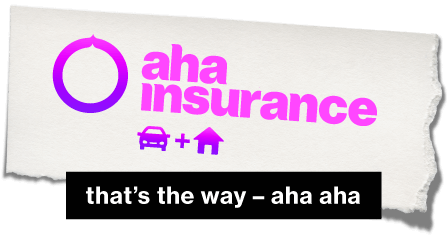Car insurance Woodstock, ON
Part of a series on car insurance rates in Ontario.

Fast facts about auto insurance in Woodstock
Average annual car insurance rate
Regular drivers in the city
Collisions per year (approximately)
%
Collision rate for the city
Average age
Average household income
%
Unemployment rate
Population
Understanding car insurance in Woodstock, Ontario
Situated conveniently between London and the Tri-City area, Woodstock enjoys car insurance rates on the lower end of Ontario’s spectrum.
That’s fantastic, given the city’s above-average collision rate and nasty winters. It’s part of Ontario’s snowbelt, which makes winter tires essential for commuters.
A big part of that low average rate rests on a very short commute to work. Most residents in the city spend no more than 15 minutes getting to work, which lowers exposure to risk on the road (and auto rates).
Woodstock’s downtown core is in the process of beginning a restoration project, but has only begun recently. Try to find a residence in other areas until that project is complete.
Get your bundle on & save!
Want even cheaper insurance? Save up to 50% on home and up to 15% on car insurance when you bundle them.

Get your bundle on & save!
Want even cheaper insurance? Save up to 50% on home and up to 15% on car insurance when you bundle them.

Busting myths about driving and insurance in Woodstock
Myth: Few jobs mean you’ll have to commute for work.
Not true. 63% of Woodstock’s workforce works inside the city, according to Statistics Canada. That means you’re very likely to reap the car insurance benefits of a short annual comute, which can reduce your car insurance rates (everything else being equal). Less time on the road exposes you to less risk of a collision.
Myth: Woodstock’s downtown makes the city unsafe and desireable.
Woodstock’s downtown has been in need of revitalization for some time, which is exactly why the city council has created a development plan to do it. They’ve earmarked $100,000 in incentives for entrepreneurs to open businesses downtown, which should bring natural foot traffic and an ecoonomic boost back to the the area.
Myth: Woodstock is a dangerous place to live.
Wrong again. Woodstock’s crime severity index was 66 for 2018, compared to 70 for Kitchener-Waterloo and 78 for London. In fact, Woodstock’s crime severity index dropped a whole 3.7% after Elizabeth Wettlaufer was brought to justice in 2017. Woodstock isn’t all that dangerous overall when we look at it by the numbers.
Myth: Winter driving in Woodstock is particularly dangerous.
Most of Woodstock’s residents don’t need to worry about this because they tend to work inside the city, spending less than 15 minutes on their way to work (according to Statistics Canada). But Woodstock is indeed a part of Ontario’s snow belt—and that can pose a significant problem for the people who do commute to London, Cambridge, or Kitchener-Waterloo.
How Woodstock’s rates compare to other cities in Ontario
- North York: $4,261
- Etobicoke: $4,199
- Brampton: $4,071
- Scarborough: $3,825
- East York: $3,605
- Woodbridge: $3,603
- Richmond Hill: $3,579
- Mississauga: $3,473
- Markham: $3,389
- Niagara Falls: $3,321
- Bowmanville: $3,308
- Peterborough: $3,259
- Pickering: $ 3,245
- Newmarket: $ 3,216
- Hamilton: $3,201
- Brantford: $ 3,158
- Maple: $3,150
- Whitby: $3,087
- Ajax: $3,053
- York: $2,999
- Toronto: $2,983
- Barrie: $2,924
- Thornhill: $2,871
- Waterloo: $2,867
- Caledon: $2,780
- London: $2,765
- Fort Erie: $2,720
- Oakville: $2,720
- Sault Ste Marie: $ 2,713
- Kitchener: $2,705
- Milton: $2,680
- St Catharines: $ 2,550
- Windsor: $2,536
- Woodstock: $2,513
- Innisfil: $2,505
- Burlington: $2,476
- Kingston: $ 2,360
- Cambridge: $2,297
- Oshawa: $2,295
- Guelph: $2,268
- Gloucester: $2,256
- Stoney Creek: $2,222
- Nepean: $2,196
- Ottawa: $2,195
- Sudbury: $2,005
- Kanata: $2,002
- Thunder Bay: $1,973
- Wasaga Beach: $1,958
Quick tips on insurance and driving in Woodstock
Steer clear of Woodstock’s most dangerous intersections.
Woodstock’s police force compiled a list of the most dangerous intersections in the city. Avoid them whenever possible to keep yourself safe (and your auto rates!). They are:
- Peel Street and Wilson Street
- Juliana Drive and Norwich Avenue
- Dundas Street and Springbank Avenue
- Clarke Street and Dundas Street
Pick residential areas with lower rates of claims and reported crime.
Higher rates of claims, thefts, property damage, or any physical incident resulting in medical bills can increase insurance rates in the area for everybody (even car insurance rates). Try to move away from streets and neighbourhoods where that happens more frequently.
For example: places like Springbank and Algonquin have good reputations, whereas the James Street area and Dundas West don’t.
Invest in coverage for overland flooding, if possible.
Woodstock experiences overland floods now and again, and they don’t just happen once every three decades. Woodstock has experienced flooding as recently as January 2020, making it worthwhile to explore overland flood coverage.
It protects you from the financial cost of repairing your basement from this particular kind of water damage. Just make sure that your insurance carrier actually provides it, because not all of them do!
Sources for facts about Woodstock:
- Statistics Canada, Woodstock 2016 Census Profile
- Ministry of Transportation, 2016 Road Safety Report
- Heart FM, “Woodstock’s Worst Intersections”
- Woodstock Sentinenal Review, “Drop in crime severity index attributed to serial killer”
- Woodstock Sentinenal Review, “Flood watch issued for Oxford County”
- UTRCA via YouTube, “Flood 2020 – Pittock Reservoir”
- City of Woodstock, “Community Improvement Plan”
Source for average insurance rates by city:
- Survey of 2,800 auto insurance policy holders in Ontario

Google Rating: 4.8
Hot Dang! Those are some beautiful words from beautiful people.






























